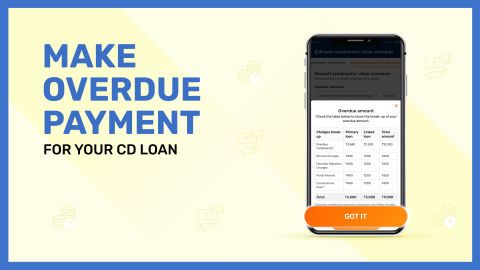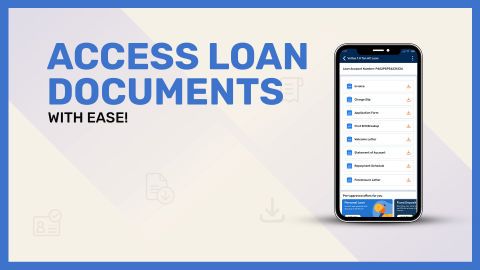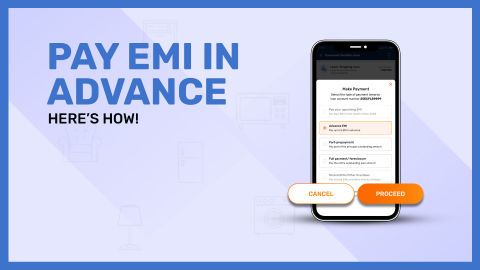Foreclosing a lawyer loan: A path to financial freedom
Foreclosing a loan can be a powerful step toward financial independence, particularly for legal professionals managing irregular income and multiple responsibilities. If you are a lawyer with an active loan, choosing to foreclose it before the scheduled end of tenure offers both financial flexibility and long-term savings. Foreclosure means repaying the entire outstanding amount in a single lump sum before all EMIs are completed.This early repayment significantly reduces your total interest outgo, making it a wise choice if you have access to surplus funds or expect a payout from high-value legal cases. Most lenders offer foreclosure options via online and offline channels, ensuring convenience and security.
Before initiating foreclosure, it's important to be aware of any applicable foreclosure charges, documentation requirements, and the outstanding loan balance. Understanding these details helps you plan efficiently and avoid delays. Once the payment is complete, obtaining a No Objection Certificate (NOC) is essential for updating your credit records and confirming the loan closure.
This guide outlines the full foreclosure process, from documentation to post-closure formalities, tailored specifically for lawyer loans.
What does foreclosing a lawyer loan mean?
Foreclosing a lawyer loan refers to the process of repaying the entire outstanding loan amount before the loan tenure officially ends. It involves settling the remaining principal along with applicable interest and foreclosure charges in one lump sum, effectively closing the loan account ahead of schedule.For lawyers, this can be a strategic financial move. As interest accrues over time on the unpaid principal, repaying early can result in considerable interest savings. It also reduces the burden of regular EMI commitments.
Lenders generally permit foreclosure once a minimum number of EMIs have been paid, often after the first few months of regular repayments. Before moving forward, it's advisable to request a foreclosure statement from your lender, which will detail the outstanding balance and any associated fees—usually a small percentage of the principal.
Post-foreclosure, the borrower must collect a No Objection Certificate (NOC) from the lender, serving as legal proof that the loan has been settled. This document plays a key role in maintaining a healthy credit profile.
Foreclosing your loan early can thus offer financial relief, improve creditworthiness, and free up resources for other personal or professional needs.
When can you foreclose your lawyer loan?
Foreclosure is a calculated financial decision, but it can only be initiated after meeting certain conditions. Lenders typically allow foreclosure after a minimum number of EMIs have been paid. This ensures that a portion of the interest component has been recovered.In most cases, borrowers are eligible to foreclose their lawyer loan after six EMIs. However, this lock-in period may vary by lender and should be confirmed through the loan agreement or customer service support.
Your financial readiness is also crucial. Foreclosing requires full repayment of the remaining principal along with any applicable charges. Legal professionals often use lump sum earnings such as bonuses or large case settlements to foreclose their loans.
Foreclosure charges, generally between 2% and 5% of the outstanding amount, must also be factored into the decision. It's important to verify these charges in your loan documents.
A clean EMI payment history further enhances your chances of a smooth foreclosure process. Ensure that your recent payments are timely and clear of any bounces to avoid additional scrutiny.
In essence, you can foreclose your lawyer loan once you meet the minimum EMI criteria and have the necessary funds, offering both peace of mind and financial flexibility.
Steps to foreclose your lawyer loan early
Foreclosing your lawyer loan requires a step-by-step approach to ensure that your account is closed correctly and without complications. Follow the steps below for a hassle-free experience:- Review your loan agreement: Understand the lock-in period, foreclosure charges, and required documents.
- Ensure minimum EMIs are paid: Most lenders require at least six EMIs before allowing foreclosure.
- Access your loan account: Log in to your lender's online portal using your registered credentials.
- Navigate to the loan section: Locate your active lawyer loan account from the dashboard.
- Generate a foreclosure statement: This will show the total outstanding balance, including charges and accrued interest.
- Clear any dues: Pay any overdue EMIs before proceeding with the foreclosure.
- Arrange funds for settlement: Make sure the full amount including foreclosure fees is available.
- Choose your payment mode: Options include NEFT, UPI, debit card, net banking, cheque, or demand draft.
- Initiate foreclosure: Complete the transaction online or visit a nearby branch with documents and payment.
- Adjust advance EMIs if applicable: Ensure any pre-paid EMIs are considered in the settlement.
- Request your NOC: Once paid, collect the No Objection Certificate as proof of closure.
- Verify your credit report: After 30–45 days, confirm that the loan is marked as ‘closed’ in your credit profile.
How to avoid penalties when foreclosing a lawyer loan?
Avoiding penalties during foreclosure involves attention to detail and adherence to procedures. Here’s how to manage it effectively:- Check the lock-in clause: Confirm the minimum number of EMIs that must be paid before you can foreclose.
- Maintain EMI discipline: Late or missed payments can lead to penalties or rejection of foreclosure.
- Settle unpaid EMIs first: Clear all outstanding dues before initiating the closure.
- Request a foreclosure statement: Ensure you have an accurate payoff figure from your lender.
- Avoid random part-payments: Use the appropriate features to make advance payments if needed.
- Foreclose on working days: Avoid delays and interest accrual by making payments on banking days.
- Use online portals when possible: Digital systems reduce errors and speed up the process.
- Request the NOC immediately: After full payment, don’t delay applying for your closure certificate.
- Monitor your credit report: Confirm that the loan is marked closed within 45 days. Follow up if needed.
Benefits of foreclosing your lawyer loan early
Paying off your lawyer loan ahead of schedule offers several valuable benefits:- Save on interest: Early repayment reduces the total interest payable over the loan’s tenure.
- Lower monthly outflow: EMI commitments end, freeing up funds for other uses.
- Boost credit score: Early closure demonstrates financial discipline and improves your credit health.
- Achieve financial peace of mind: Being debt-free relieves financial pressure and supports mental wellbeing.
- Manage income variability better: Ideal for lawyers who face fluctuating monthly earnings.
- Avoid future penalties: Foreclosure eliminates the risk of late fees or EMI bounce charges.
- Free up funds for growth: Extra money can be redirected to your legal practice or personal goals.
- Improve future borrowing capacity: A clear loan record enhances your eligibility for new credit.
- Protect against rising interest rates: Early repayment shields you from future rate hikes.
- Simplify your finances: With one less liability, budgeting and planning become easier.
- Reclaim pledged assets (if any): If your loan was secured, you regain full control over the collateral.
Documents needed to foreclose your lawyer loan
To foreclose your lawyer loan successfully, prepare the following documents:- Loan account number: To identify your active loan.
- Registered contact details: Required for authentication during online or offline interactions.
- PAN card: Necessary for financial verification and tax compliance.
- Government-issued ID: Such as Aadhaar or voter ID, especially for in-branch processes.
- Latest EMI receipt: Acts as proof of recent payment, if required.
- Foreclosure statement: Details the total amount payable including charges.
- Bank statement (optional): May be used to verify payments or advance EMIs.
- Cheque or demand draft: For offline foreclosure payments.
- Signed foreclosure form: Required for in-person requests at a branch.
- No Objection Certificate (post-payment): Issued after settlement, confirming account closure.




